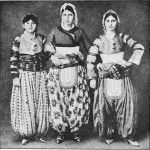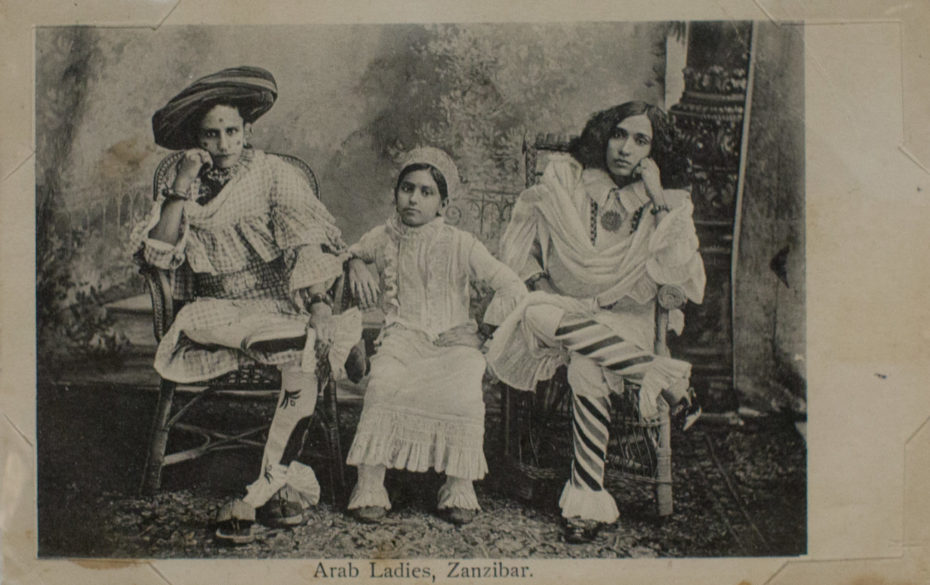
When fashion has been borrowed from the past over and over again, it’s rare to find something that you haven’t seen before. I was browsing through snippets of a new exhibition at the Smithsonian’s National Museum of African Art, and noticed that among the historic photographs captured throughout East Africa from the 1890s-1920s, there was one particular trend among the Swahili women’s style of dress. Bold, statement trousers, ruffled and flared at the ankle with matching blouses, also ruffled and flared at the sleeves and collar. It’s so rare to see women in historical photographs wearing trousers, let alone such fabulous pant suits as these. And suddenly, I wish I knew how to make my own clothes…
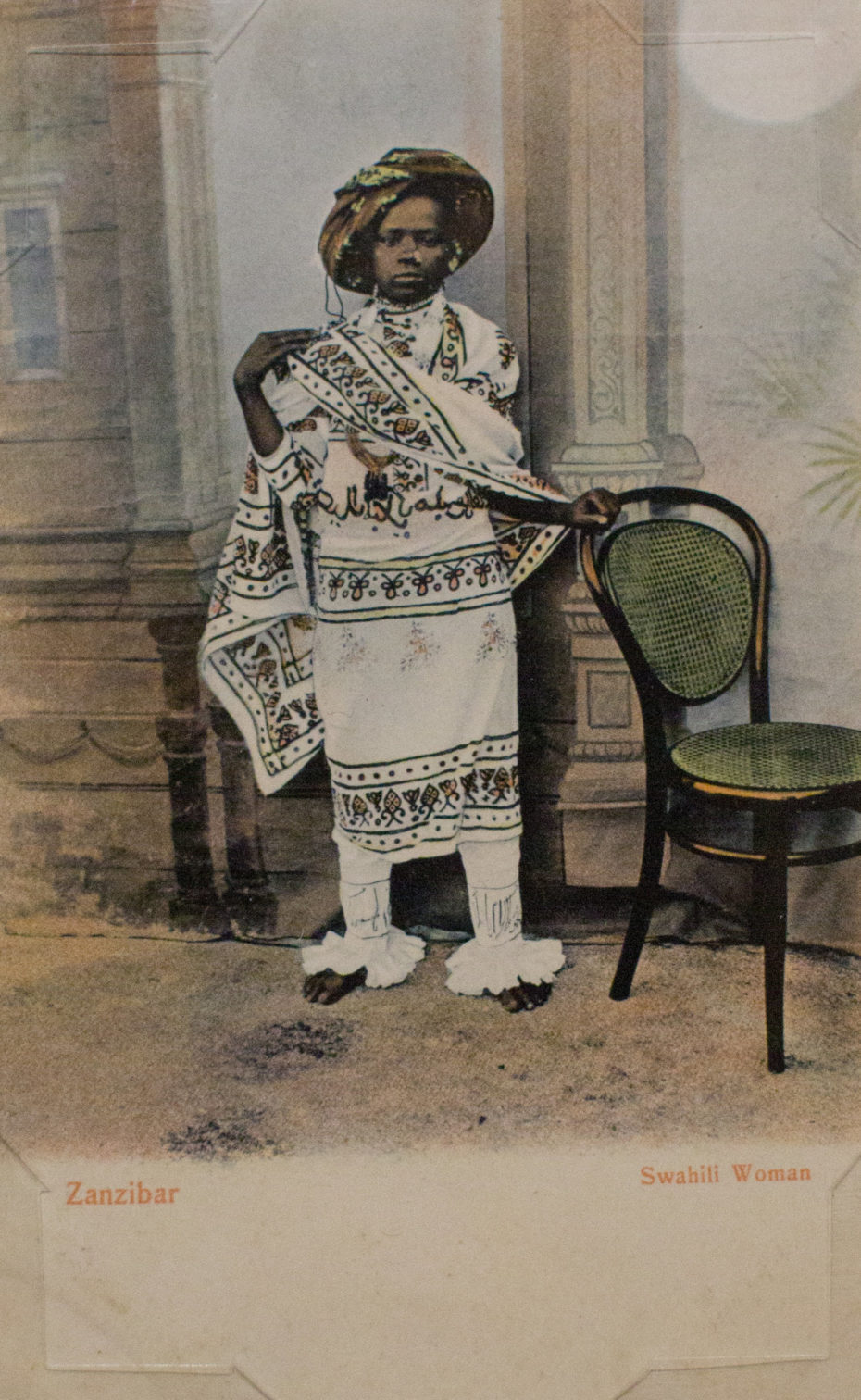
These portraits were taken in Zanzibar, an island populated by the Swahilis or ‘coast people’. They are the descendants of Arabs who generations ago arrived there as traders and married native inhabitants. To this day, they speak archaic Bantu mixed with Arabic, but also use Persian, Hindu, Portuguese, German and English words. At the turn of the century, the Swahili coast quickly embraced photography, making the art their own.
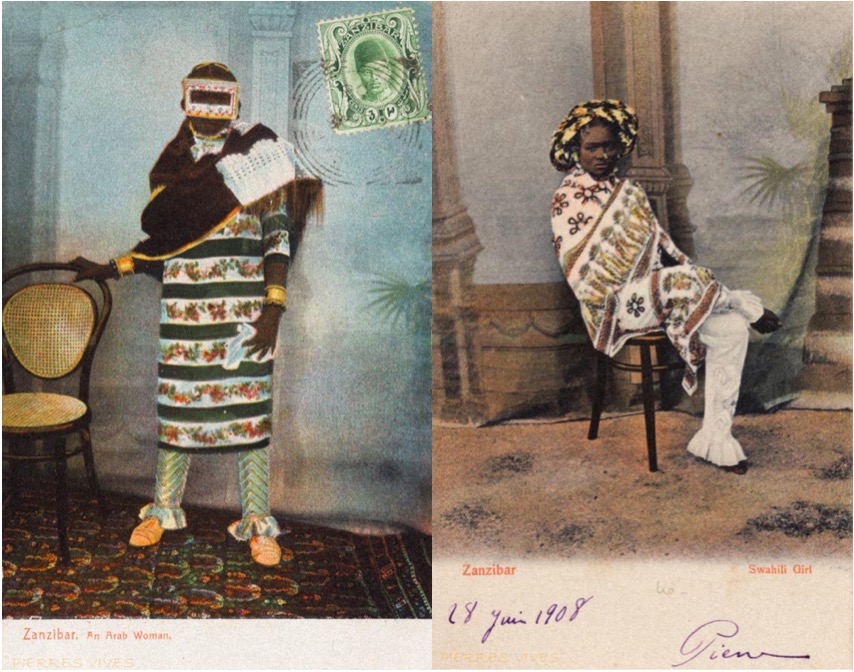
Pereira de Lord and his brother were among the most prolific photographers in Zanzibar history, no one took more photographs of old Zanzibar than they did and their work makes up a large part of the current Smithsonian exhibition, World on the Horizon: Swahili Arts Across the Indian Ocean, running until September 3rd in Washington DC.
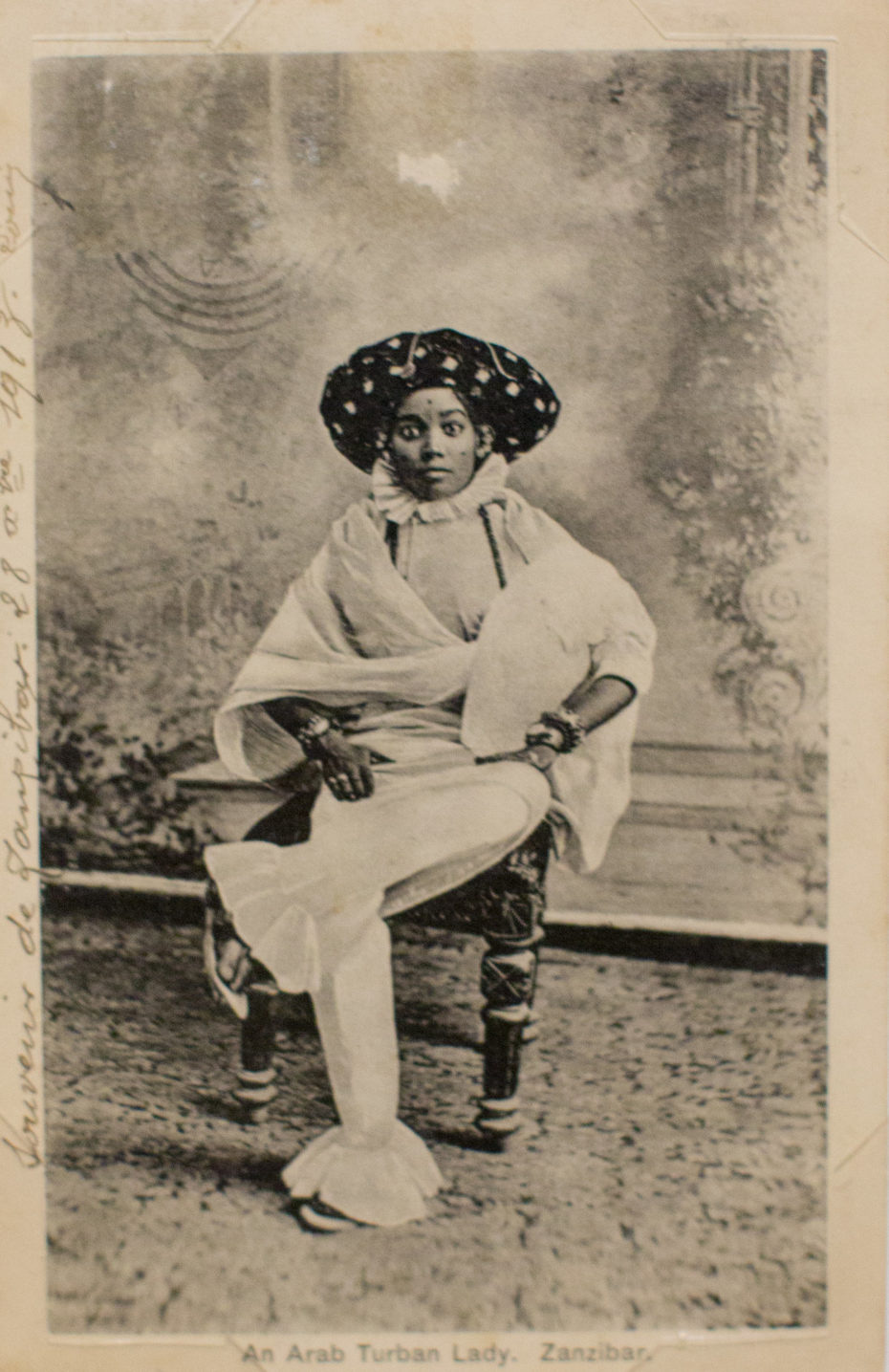
The exhibition’s curator acknowledges a darker side to the photographs however, noting that “unbeknownst to the subjects, photographers often turned the negatives from private shoots into postcards for Westerners to sell or send back home as mementos from their East African trips.”
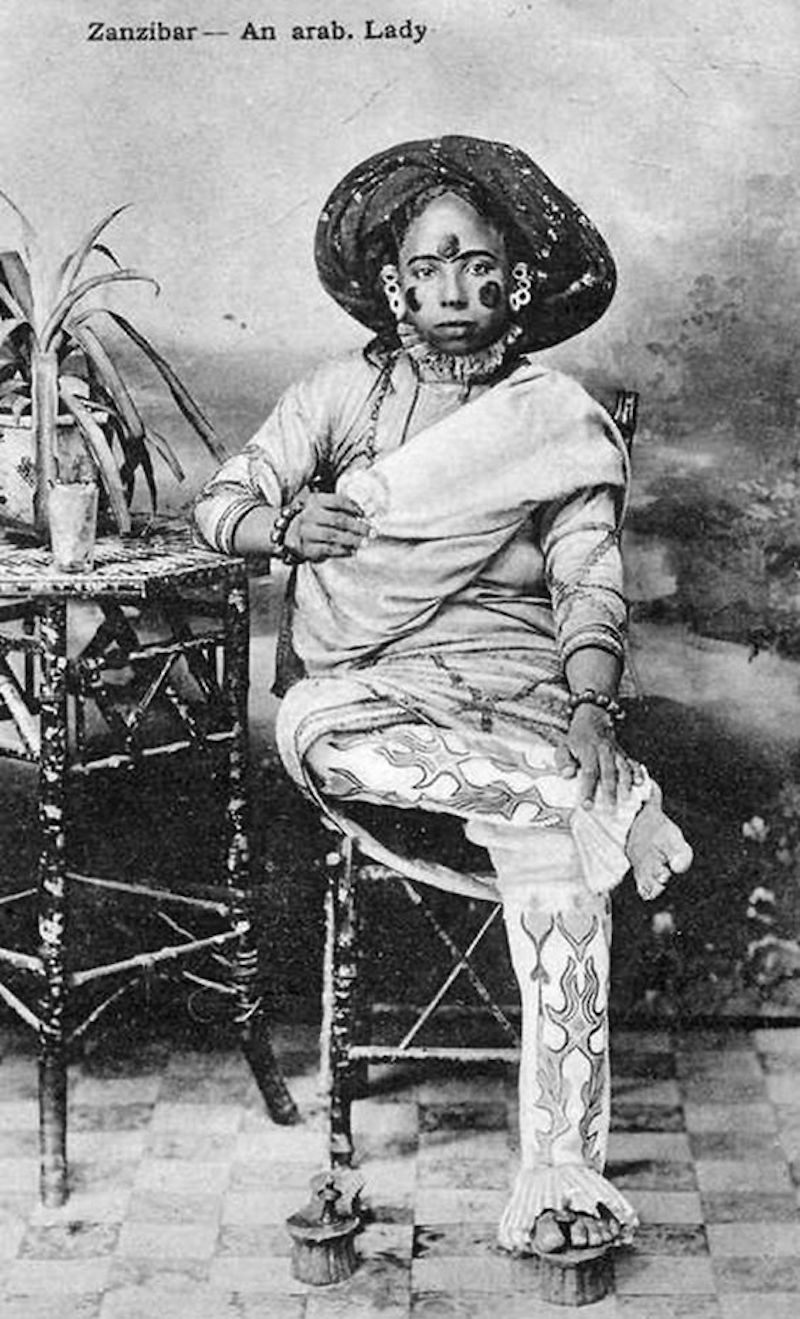
Had these photographs not made their way to Europe however, I wonder if they might have been lost over time. These photographs reveals unexpected flair and attitude that 19th century Zanzibar women had. Everything from the make-up to the footwear is carefully styled.
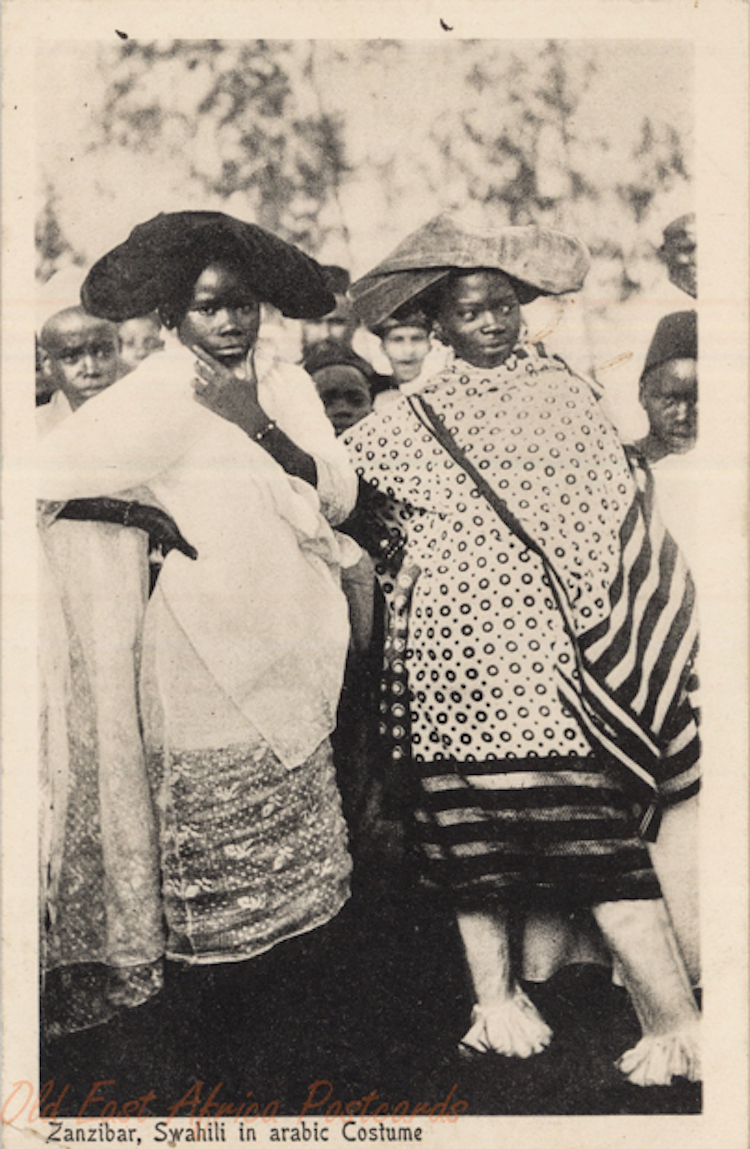
As for the fabulous fashion, some of the postcards I found from other sources are captioned, “Swahili in Arabic costume”.
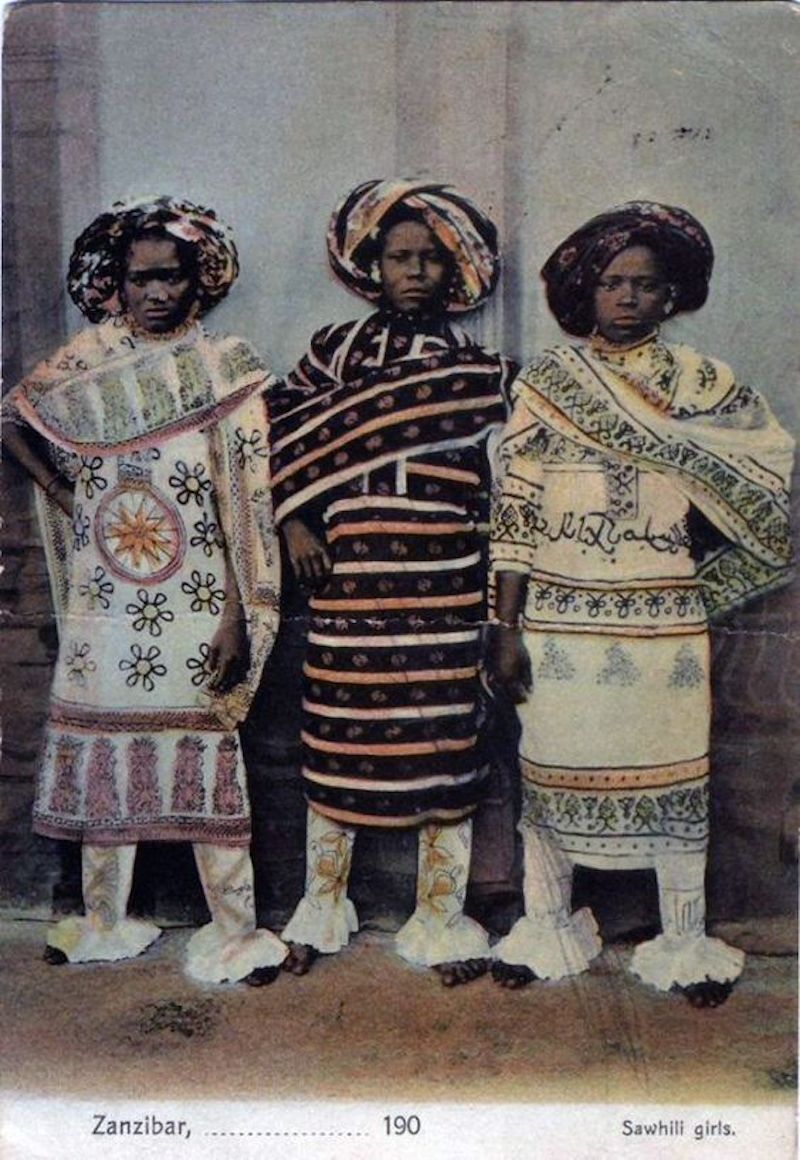
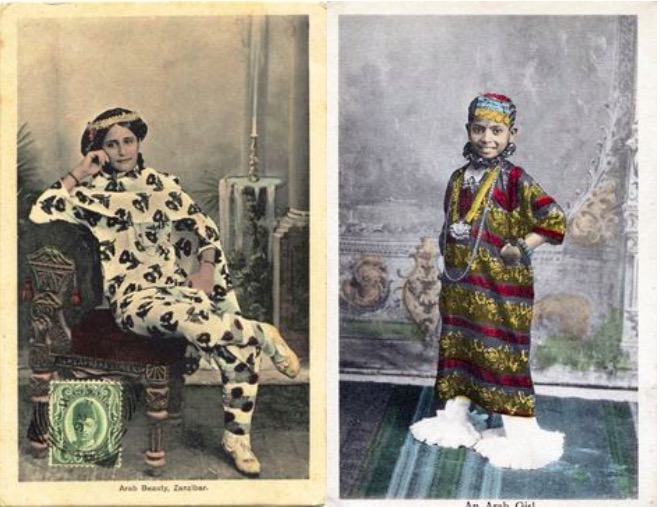
As far back as the 8th century, Persian, Indian, and Arab traders used Zanzibar as a base for voyages between the Middle East, India, and Africa. Swahili people became intermediaries and facilitators to local, Arab, Persian, Indonesian, Malaysian, Indian, and Chinese merchants.
It does look like these outfits could be a result of mixing all these cultures together to create a unique style for the Swahilis of Zanzibar. The flares and ruffles may have had a practical purpose for the locals.
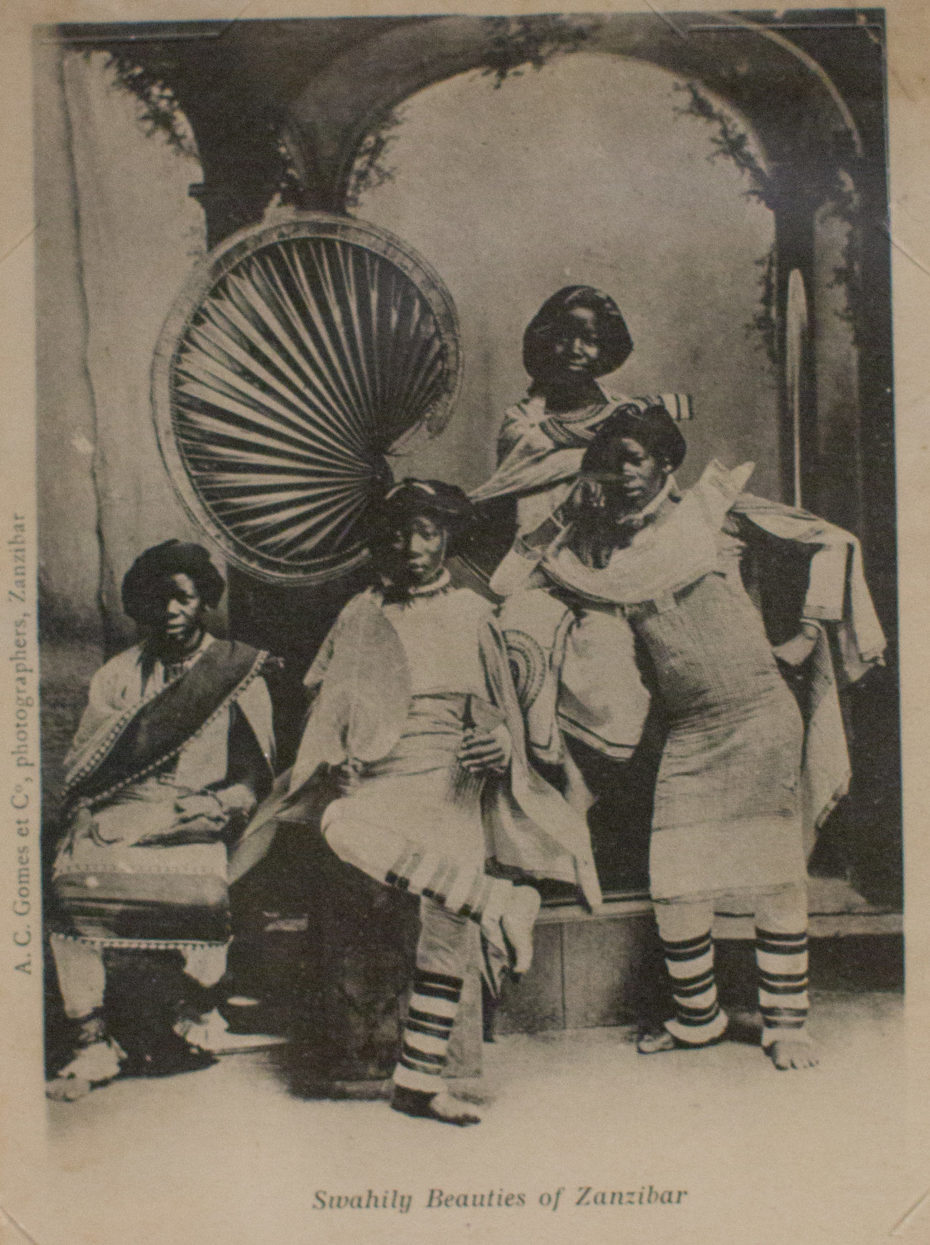
Seventies pop group ABBA might have come close to borrowing their style (a fashion moment that most of us would rather forget), but wouldn’t it be grand to see the real pant suit of Zanzibar have its 21st century comeback?


